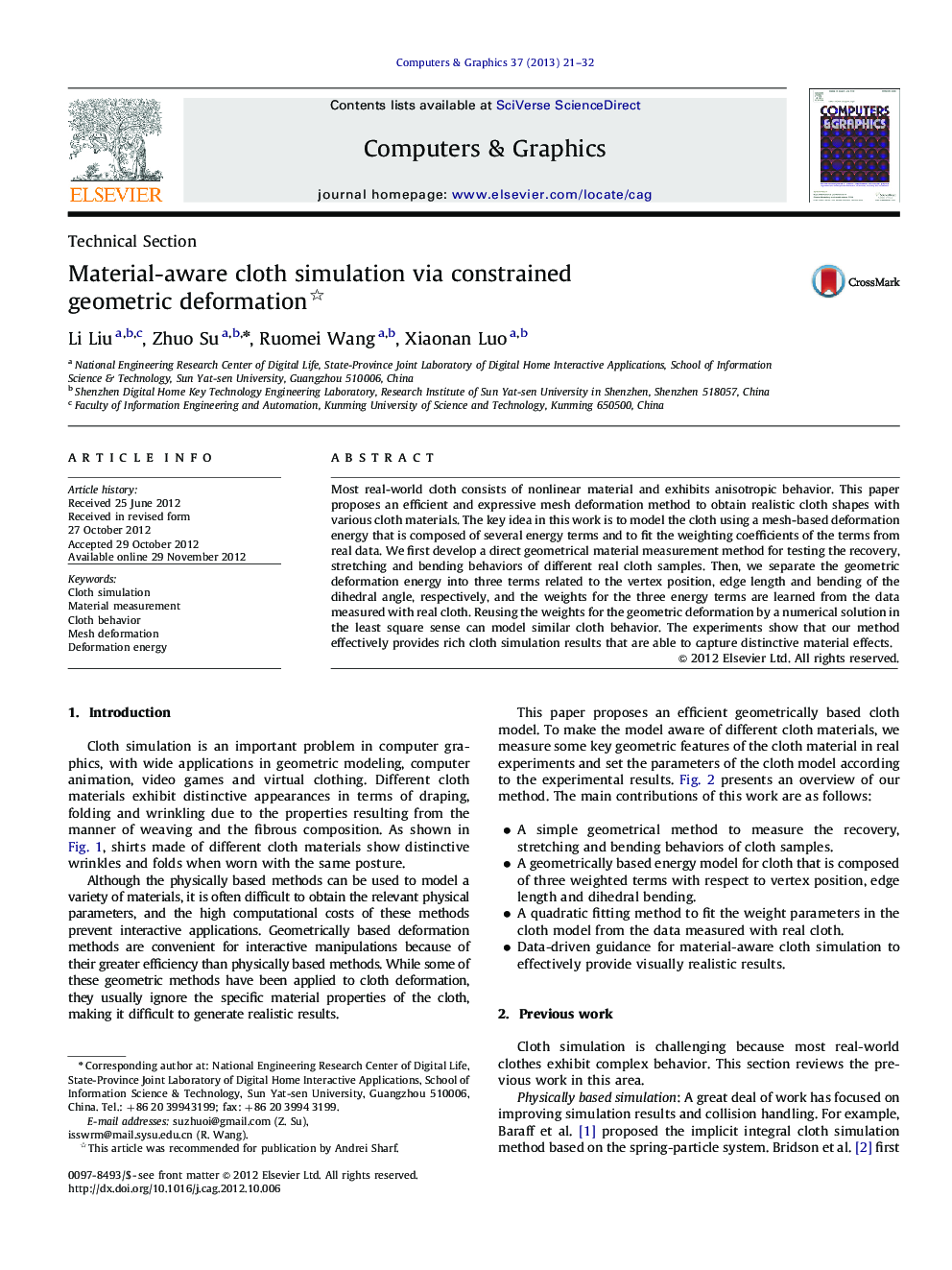| Article ID | Journal | Published Year | Pages | File Type |
|---|---|---|---|---|
| 441999 | Computers & Graphics | 2013 | 12 Pages |
Most real-world cloth consists of nonlinear material and exhibits anisotropic behavior. This paper proposes an efficient and expressive mesh deformation method to obtain realistic cloth shapes with various cloth materials. The key idea in this work is to model the cloth using a mesh-based deformation energy that is composed of several energy terms and to fit the weighting coefficients of the terms from real data. We first develop a direct geometrical material measurement method for testing the recovery, stretching and bending behaviors of different real cloth samples. Then, we separate the geometric deformation energy into three terms related to the vertex position, edge length and bending of the dihedral angle, respectively, and the weights for the three energy terms are learned from the data measured with real cloth. Reusing the weights for the geometric deformation by a numerical solution in the least square sense can model similar cloth behavior. The experiments show that our method effectively provides rich cloth simulation results that are able to capture distinctive material effects.
Graphical abstractThis paper proposes an efficient and expressive mesh deformation method to obtain realistic cloth shapes with various cloth materials.Figure optionsDownload full-size imageDownload high-quality image (452 K)Download as PowerPoint slideHighlights► A simple geometrical method to measure the recovery, stretching and bending behaviors of cloth samples. ► A geometrically based energy model for cloth that is composed of three weighted terms with respect to vertex position, edge length and dihedral bending. ► A quadratic fitting method to fit the weight parameters in the cloth model from the data measured with real cloth. ► Data-driven guidance for material-aware cloth simulation to effectively provide visually realistic results.
